Earlier this year, a regional SWAT team led by deputies with the Pinal County (Ariz.) Sheriff's Office took POLICE Magazine into the Vekol Valley in the Arizona desert to show one way smugglers bring narcotics across the U.S.-Mexico border. Smugglers often use illegal immigrants as drug mules to carry 25-pound marijuana bundles using makeshift "backpacks" of rope and cut strips of Mexican blankets to lessen discomfort. Listen to our podcast, "Tracking Smugglers in Southern Arizona," with Pinal County Sheriff's Sgt. Matt Thomas. Photos by Paul Clinton.
How Cartels Smuggle Narcotics Into Arizona
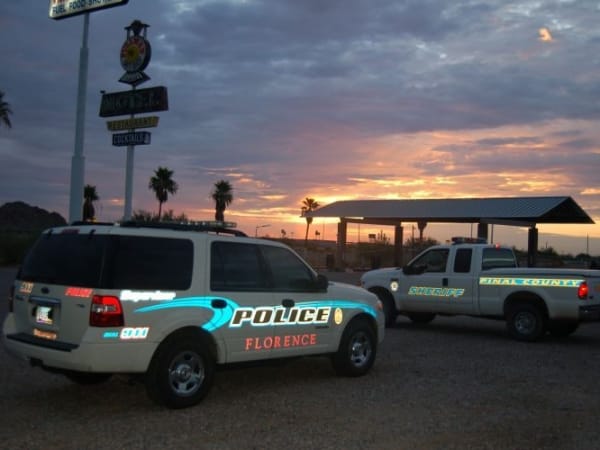
To combat smuggling, deputies with the Pinal County (Ariz.) Sheriff's Office lead a regional SWAT unit made up of officers from smaller local agencies such as the Florence PD, Casa Grande PD and Eloy PD. During summer months, they often begin a patrol at dawn. Deputies enter the Vekol Valley near Interstate-8 and Interstate-10 near the city of Casa Grande.
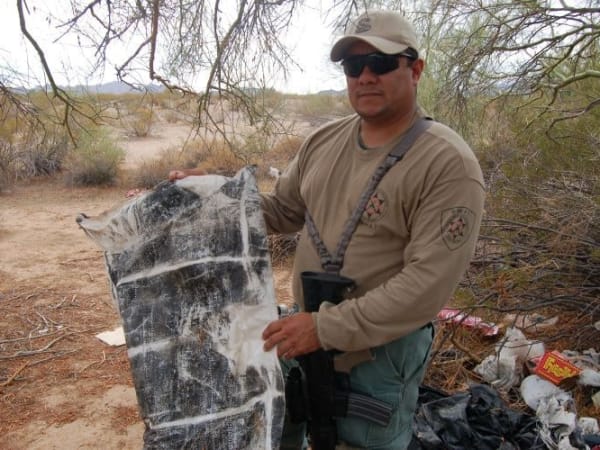
The marijuana is first wrapped in a clear cellophane-type wrapping, and then concealed inside a durable, yet thin sugar sack. After a rope backpack is added, the sack is then spray painted black so it can be better concealed from Border Patrol agents.
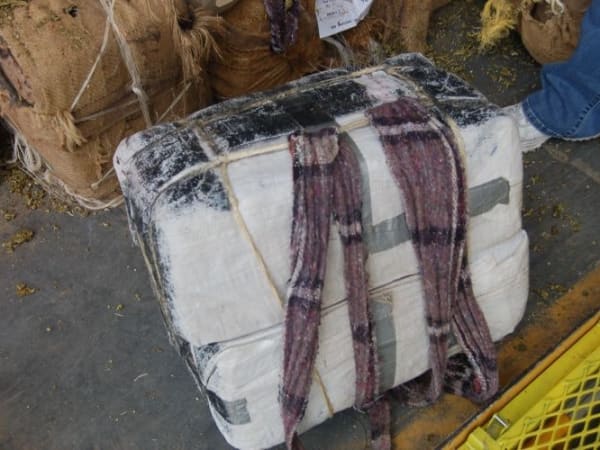
Here's an example of a typical rope backpack used for smuggling. In this case, two 25-pound bundles are stacked for the drug mule to haul across the rugged Arizona desert.
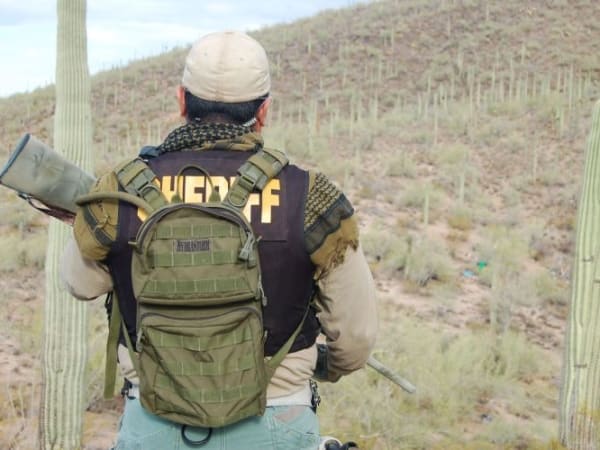
The regional SWAT unit enters the Vekol Valley using a Diamond-shape patrol formation to more quickly respond if fired upon, after sending a sniper lookout ahead to stand guard. Deputies have identified 23 locations where cartel associates place scouts, who use two-way radios with rolling encryption to avoid detection.
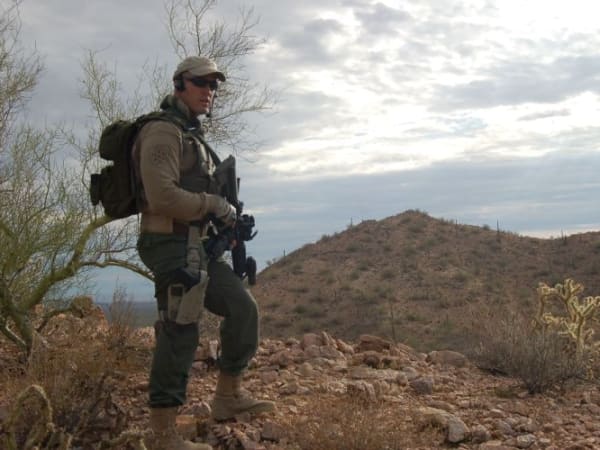
Pinal County Sheriff's Sgt. Matt Thomas leads the regional SWAT unit through the rugged landscape of the Vekol Valley.
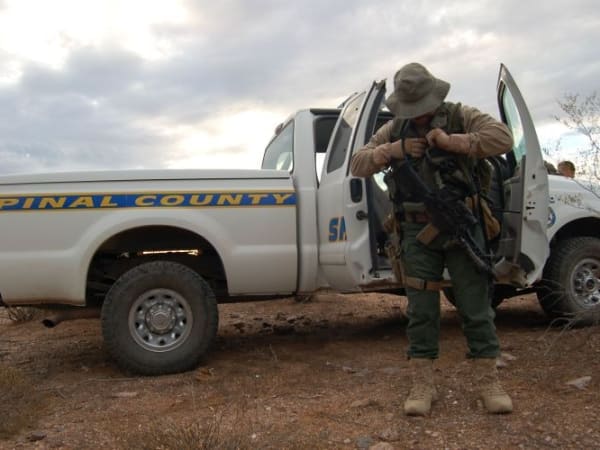
A Pinal County deputy gears up to enter the Vekol Valley. Deputies must arm themselves with carbine-type rifles, because the area has been plagued by armed smugglers who guard narcotic loads passing through the valley.
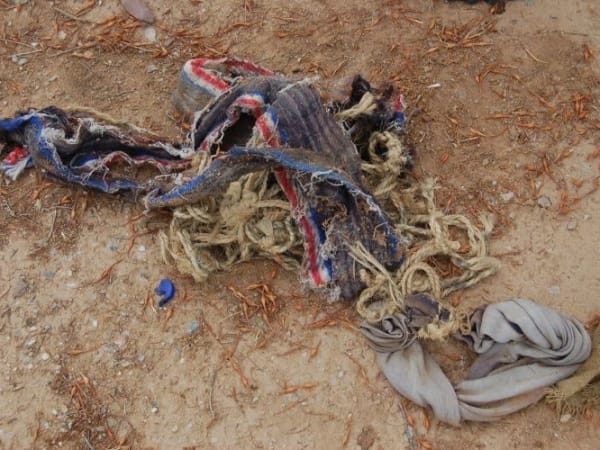
Smugglers use make-shift backpacks to carry one or two 25-pound bundles of marijuana through the desert. The bundles are wrapped in ropes and strips of Mexican blankets are cut to provide padding for the shoulders on the front of the pack. The "backpacks" are discarded alonside Interstate 8, when the drugs are picked up.
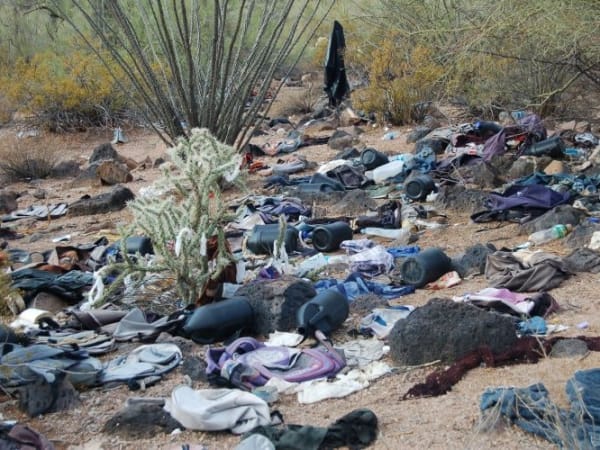
Smugglers use "lay ups" to dump their trash and rest so they can survive the gruelling trek through the Arizona desert of some 90 miles from the border to Interstate-8 where they summon cartel drivers to pick up narcotic loads. This lay up is positioned just before the final leg, where smugglers lighten their loads of backpacks, water bottles, shoes and toilet paper. Smugglers typically use bleach bottles purchased in Mexico for drinking water canteens, because they're black and lessen the chance of detection.
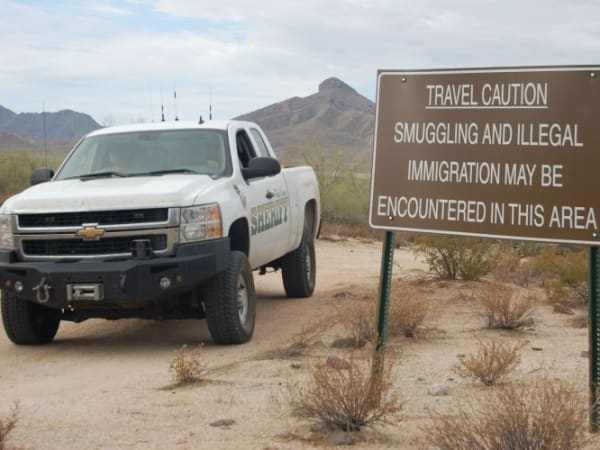
The federal Bureau of Land Management posts warning signs for tourists who would venture into the remote areas of southern Arizona's rugged, unforgiving desert.
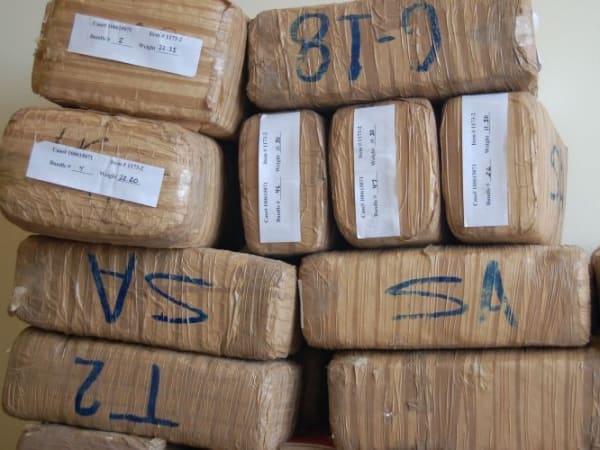
Seized marijuana bundles often carry markings that indicate their final destination into cities such as Houston, San Antonio, Phoenix or other areas across the U.S. Cartels associates use permanent markers to mark dope bundles with destination codes.

